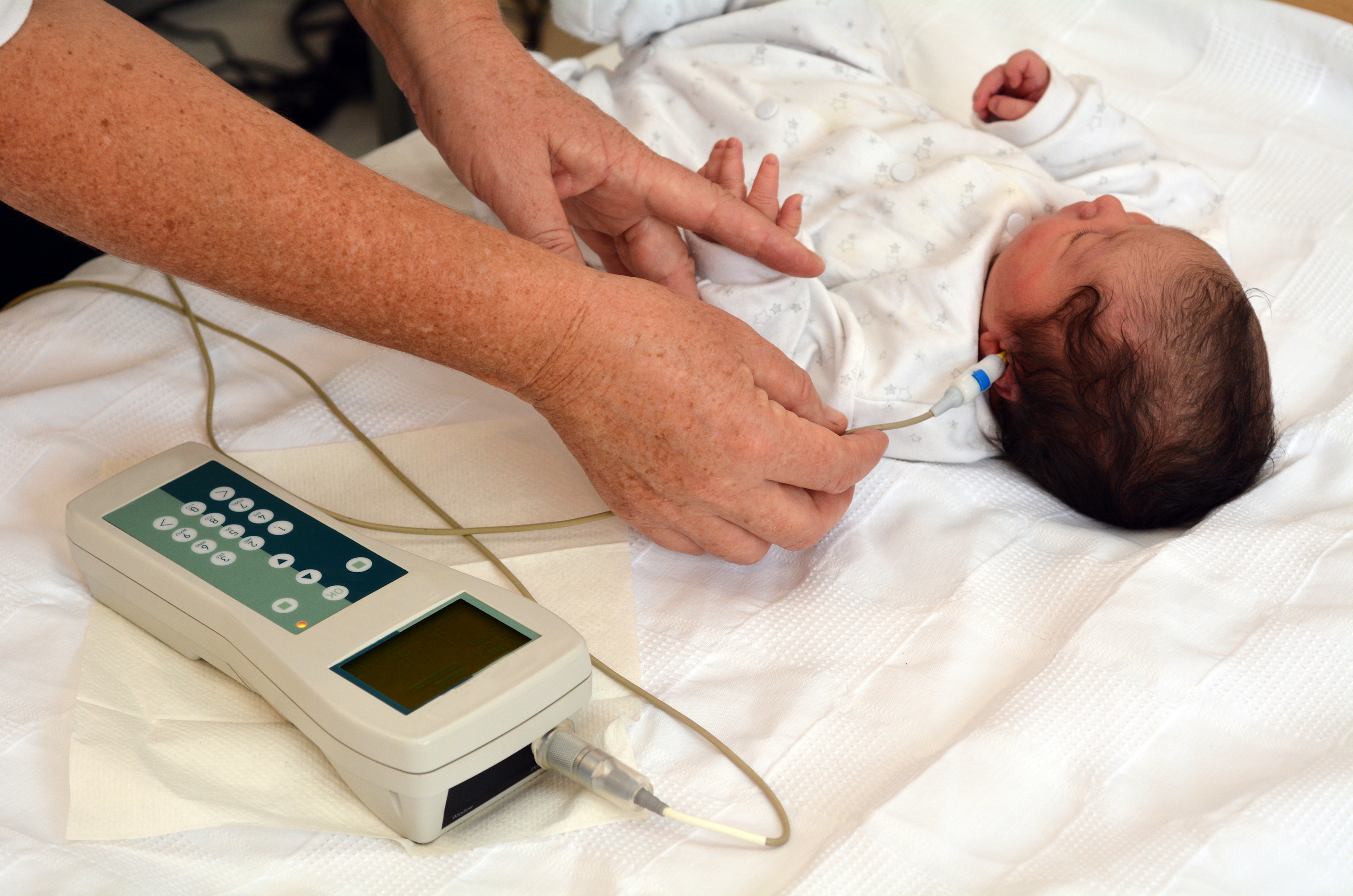Health Capsule
Testing Baby’s Hearing

Most infants are screened for hearing loss before they leave the hospital. This helps doctors detect any hearing problems early and start treatment. Children with hearing loss who get help early develop better language skills than those who don’t.
If your baby’s hearing isn’t tested at the hospital, you should get it checked by the time they’re one month old. Two tests can be used to check your baby’s hearing.
The otoacoustic emissions (OAEs) test measures whether parts of the ear respond to sound. A soft earphone is placed in your baby’s ear canal. It plays sounds and measures an “echo” response that occurs in ears with normal hearing.
The auditory brain stem response (ABR) measures the hearing nerve’s response to sound. During this test, your baby wears earphones and has electrodes placed on his or her head. The electrodes are painless and are put on and removed like stickers.
If the screening shows that your baby may have hearing loss, you’ll be referred for follow-up testing. If possible, see a pediatric audiologist. They specialize in testing and treating children with hearing loss. Make an appointment as soon as possible—ideally by the time your baby is 2 to 3 months old. Depending on the testing results, you may also be referred to an ear, nose, and throat specialist.
If your child has hearing loss, various tools can help. These include hearing aids, cochlear implants, and communication approaches. Learn more about infants and hearing loss.
NIH Office of Communications and Public Liaison
Health and Science Publications Branch
Building 31, Room 5B52
Bethesda, MD 20892-2094
Contact Us:
nihnewsinhealth@od.nih.gov
Phone: 301-451-8224
Share Our Materials: Reprint our articles and illustrations in your own publication. Our material is not copyrighted. Please acknowledge NIH News in Health as the source and send us a copy.
For more consumer health news and information, visit health.nih.gov.
For wellness toolkits, visit www.nih.gov/wellnesstoolkits.




